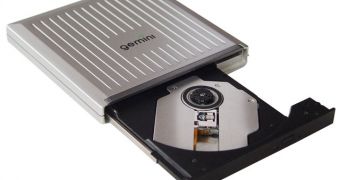Atmel Corporation, a hardware manufacturing company that is specialized in microcontrollers, advanced logic, mixed-signal, nonvolatile memory and radio frequency components, announced the launch of two new front monitoring diode integrated circuits for use in slim and ultra slim HD-DVD and Blu-ray drives that are typically employed in laptop and notebook computer systems.
The two new front monitor diodes (FMD for short), integrated circuits (ICs) are codenamed ATR1841 and ATR1842 and they are intended for use in the optical pick-up units of the mobile optical drives as they measure only 3mm by 3mm, while offering a high level of performance. Because the mobile computing market is on a perpetual rise and because the need to integrate HD-DVD and Blu-ray drives into laptops is growing too, optical drives manufacturers are looking for solutions to further miniaturize electronic components in order to produce slim and ultra slim units that are able to function at fast pulse response times and low operating noise. Atmel provides a technology to overcome space limitations while improving the overall performance of the drives.
In order to be compatible with as many of the existing systems as possible, both of Atmel's products are offering support for all wavelengths used in CD, DVD, and HD-DVD/Blu-ray drives, while featuring a serial interface which allows for future firmware upgrades as well as a reduction in pin count allowing the entire integrated circuit to fit in a 3mm by 3mm QFN package. Because of their unique design and proprietary photo-diode processing technology, both front monitor diodes sport a high channel bandwidth of over 160 Mhz while at the same time operating at a very low noise level.
The Atmel process technology is certified as offering stable high performance even when the diode is exposed to blue laser light and high temperatures over extended periods of time, which improves the life expectancy of the device as well as its overall reliability. As both integrated circuits support firmware upgrades, manufacturers and users can easily change the operating mode, being able to switch between the three available gain modes, the need for external control devices being eliminated and resulting in an overall bill of materials.

 14 DAY TRIAL //
14 DAY TRIAL //